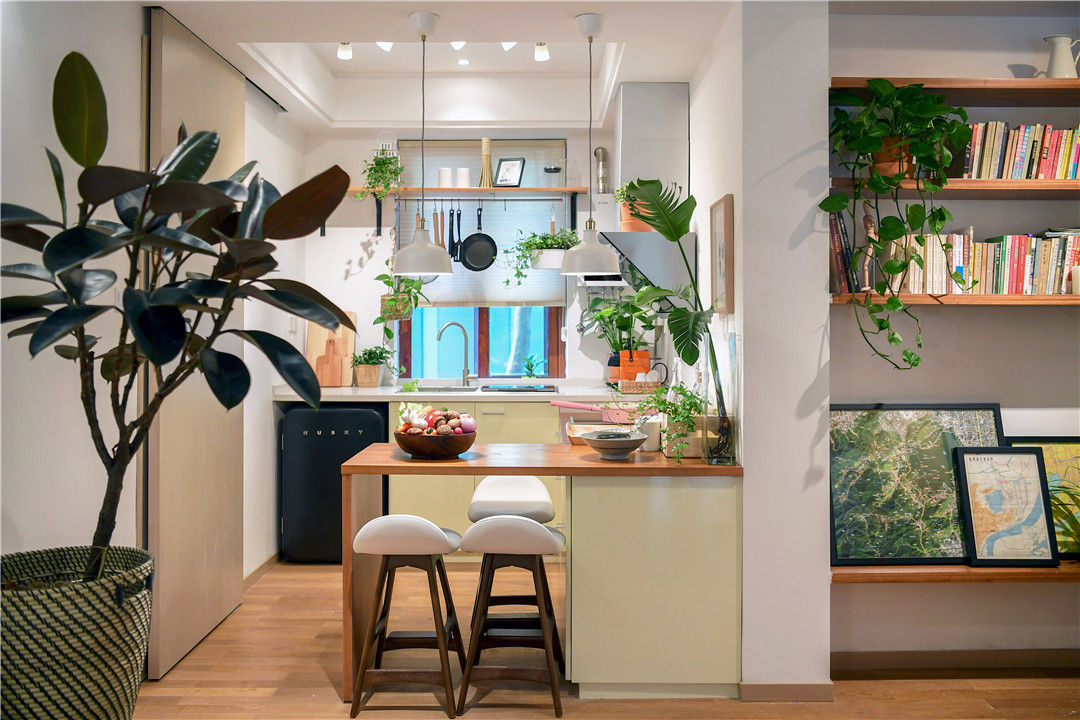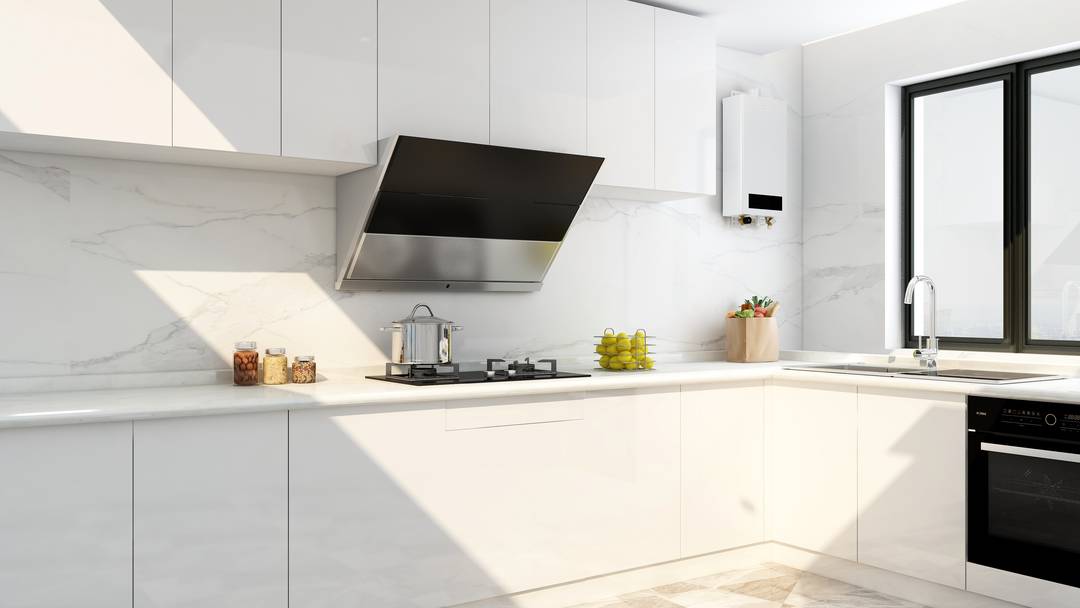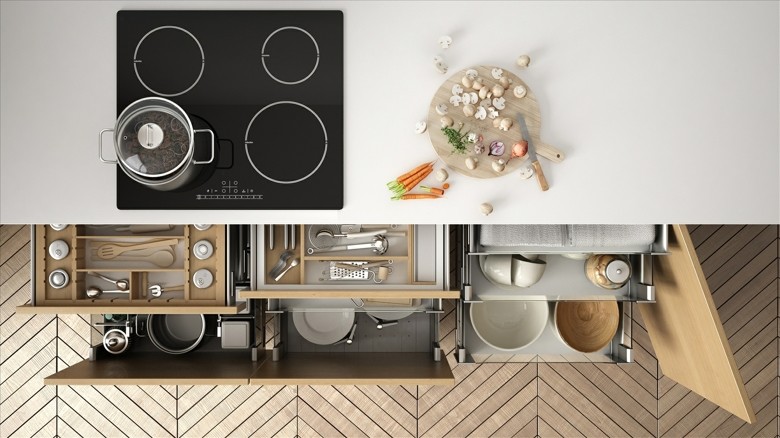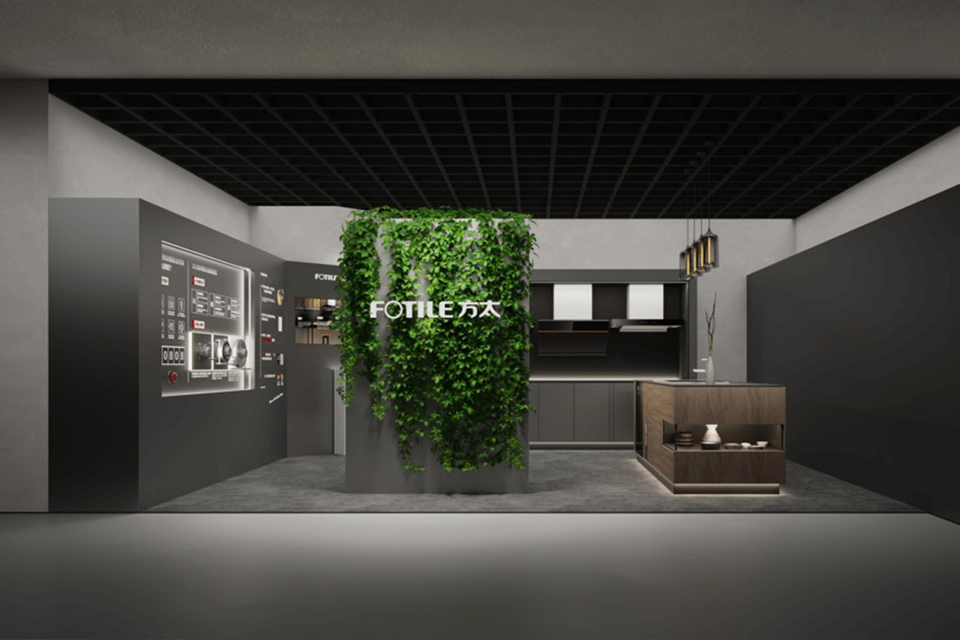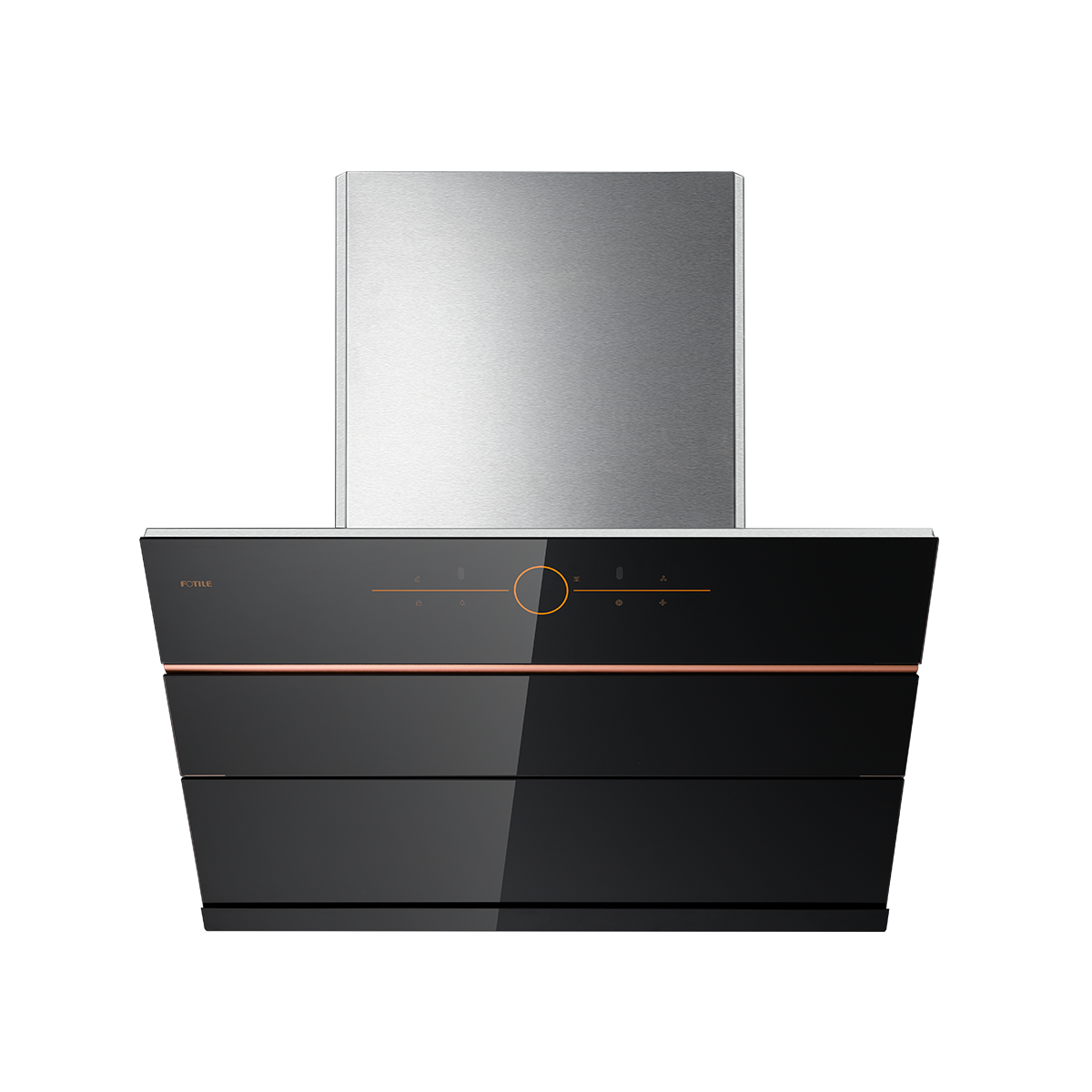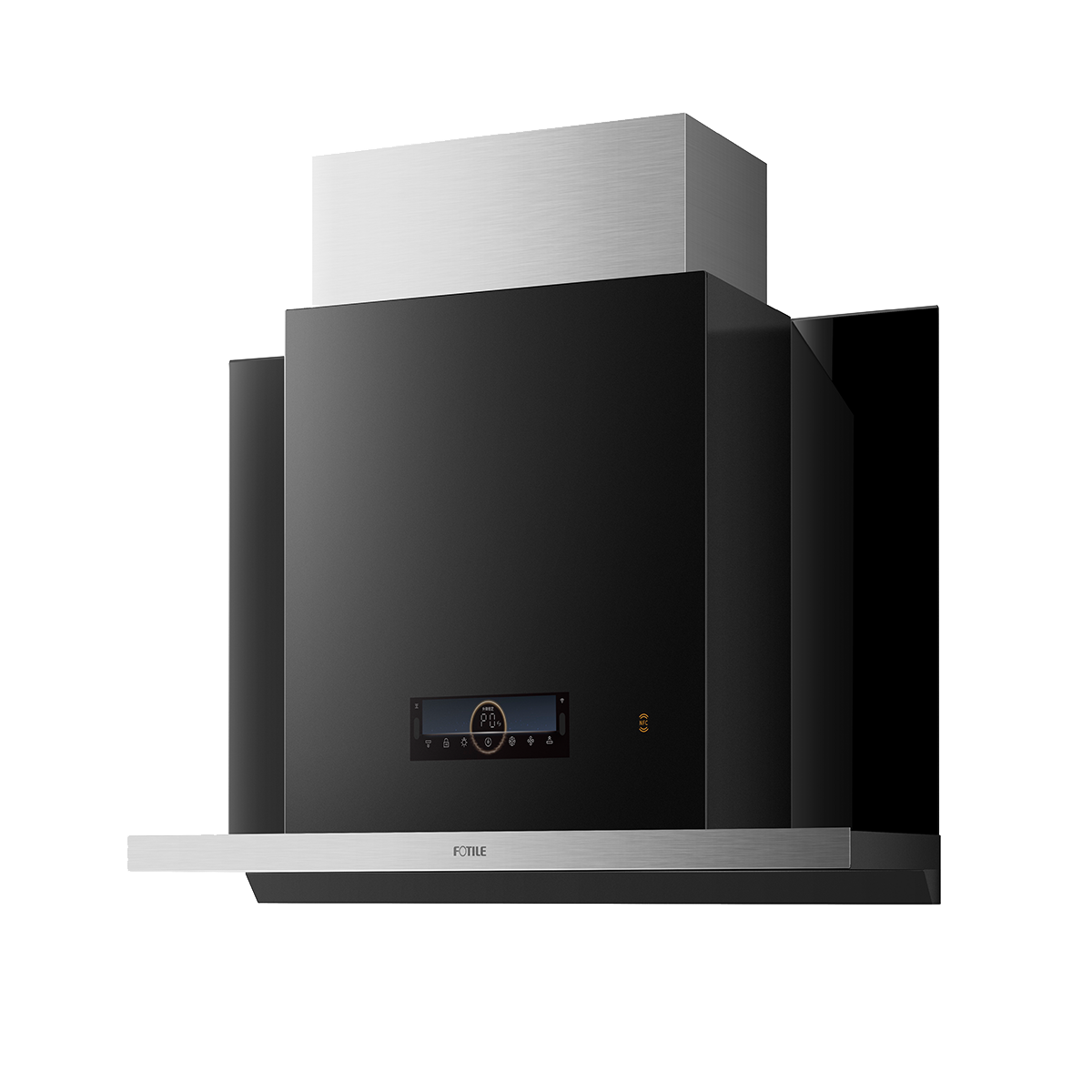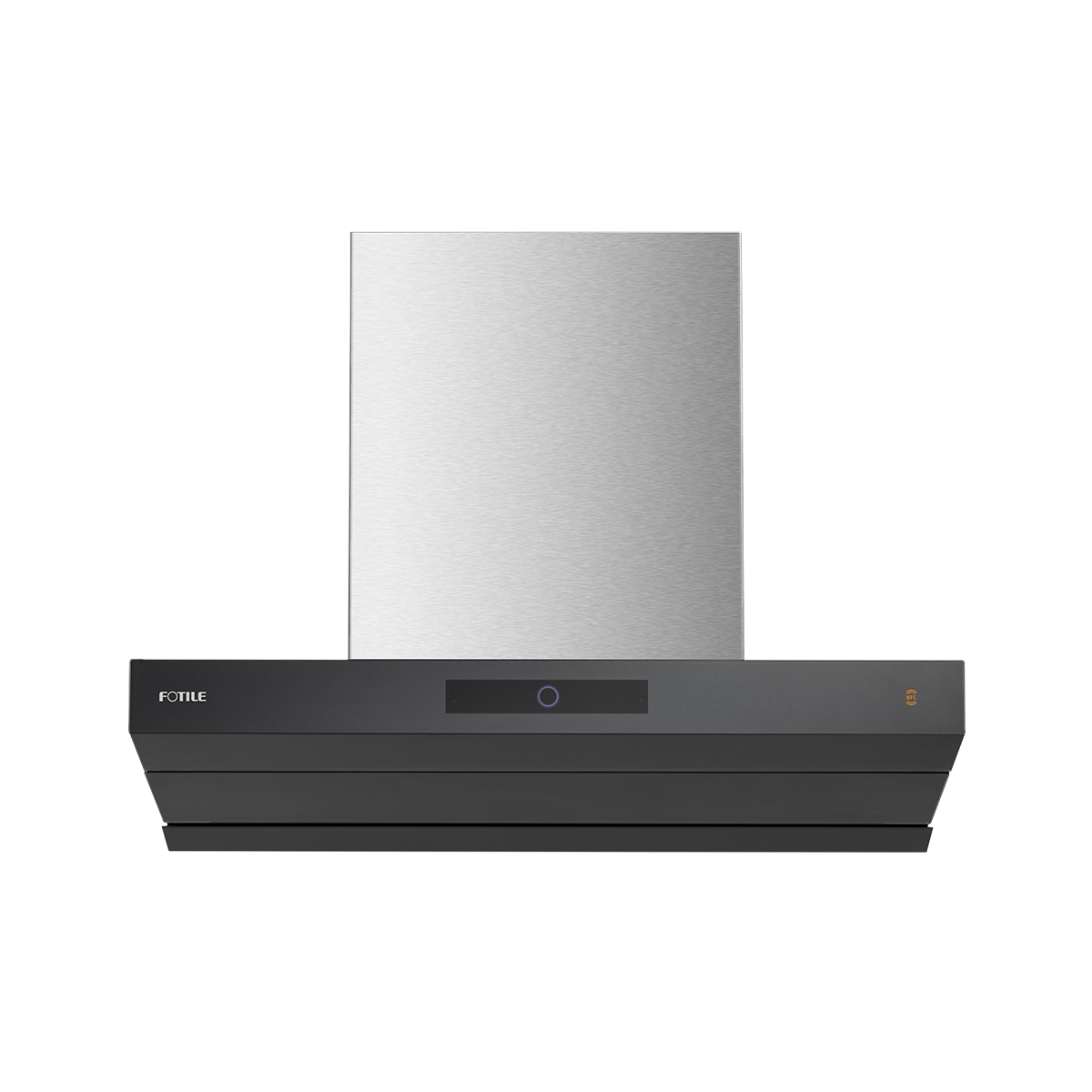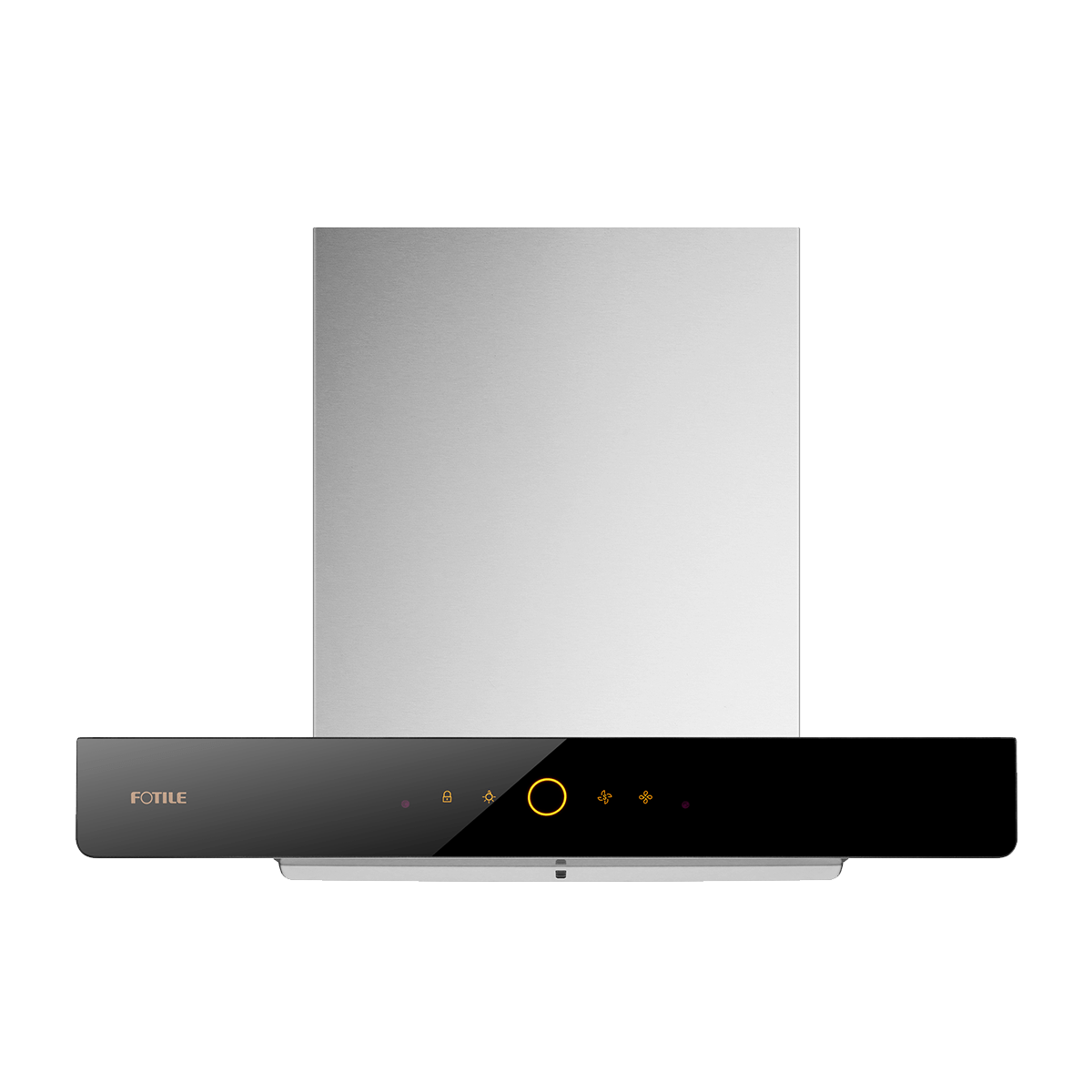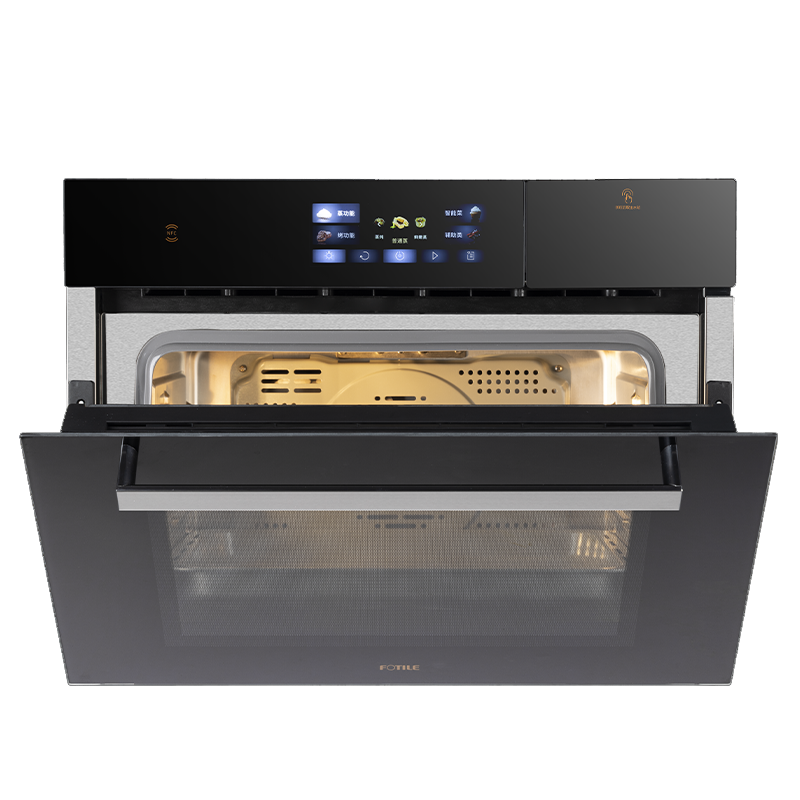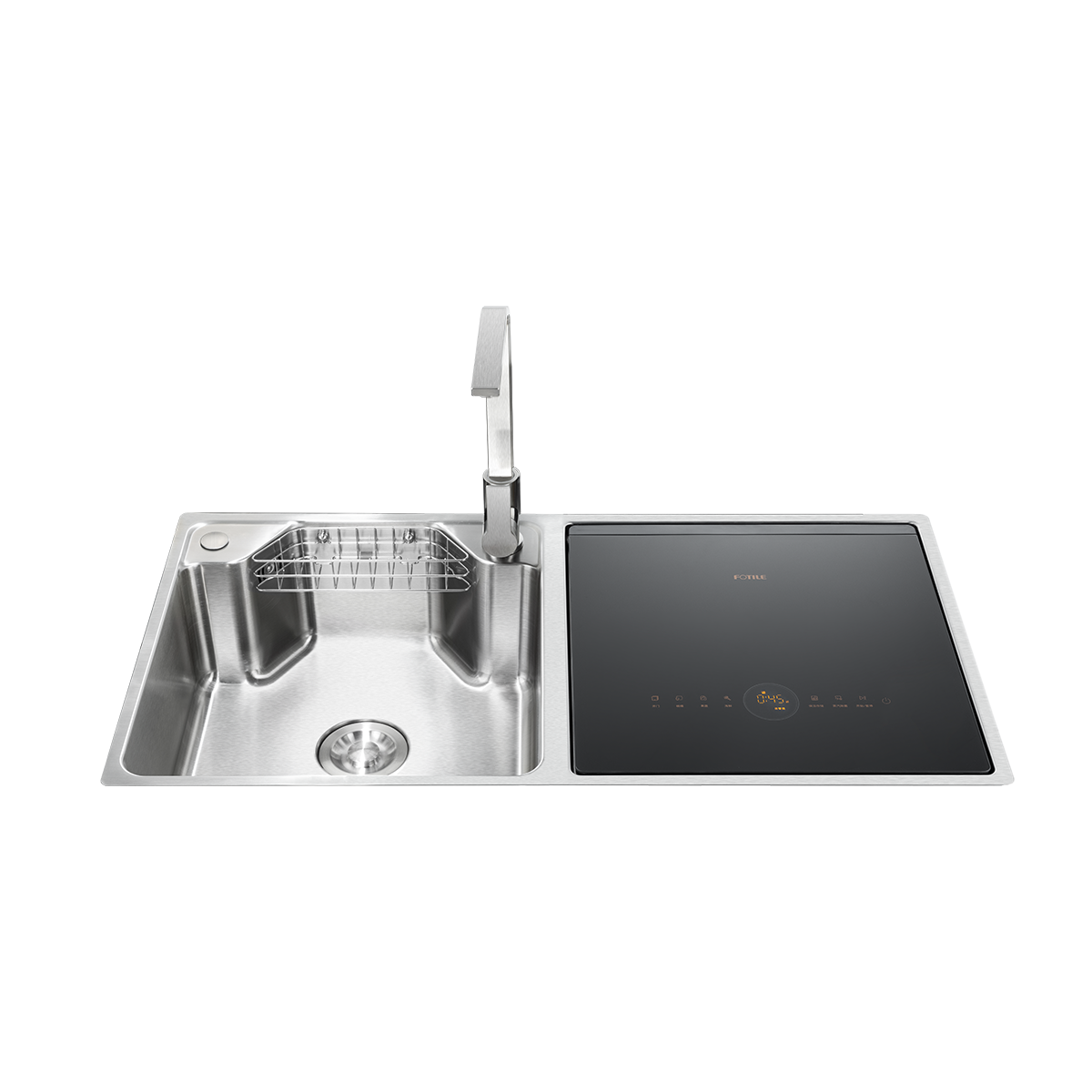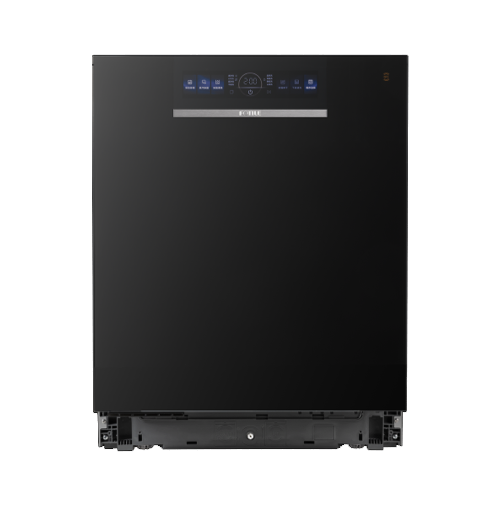2025-01-25
Kitchen Storage Principles
In all household spaces, the kitchen can easily become cluttered. In a 5-6m2 kitchen, various essential kitchen appliances need to be installed while also storing a large number of supplies and ingredients. All these items serve the pot on the stove. No, ultimately, they serve our stomachs.
However, if kitchen items are randomly piled up, be prepared for the awkward situation of “cooking for five minutes and cleaning for two hours.”

Since space is limited, let’s organize storage effectively! What constitutes good storage? Is it about keeping everything neat in the kitchen or putting everything into cabinets and taking them out only when needed? Good storage generally follows these three principles:
Principle One: “Out of Sight, Out of Mind”
What does “out of sight, out of mind” mean? It means that anything that can fit into cabinets or drawers should never be left on the countertop. First, countertops are meant for cooking; if they are cluttered, there won’t be enough space to work. Second, residues from food preparation and oil fumes from cooking can make exposed shelves and containers greasy and difficult to clean.
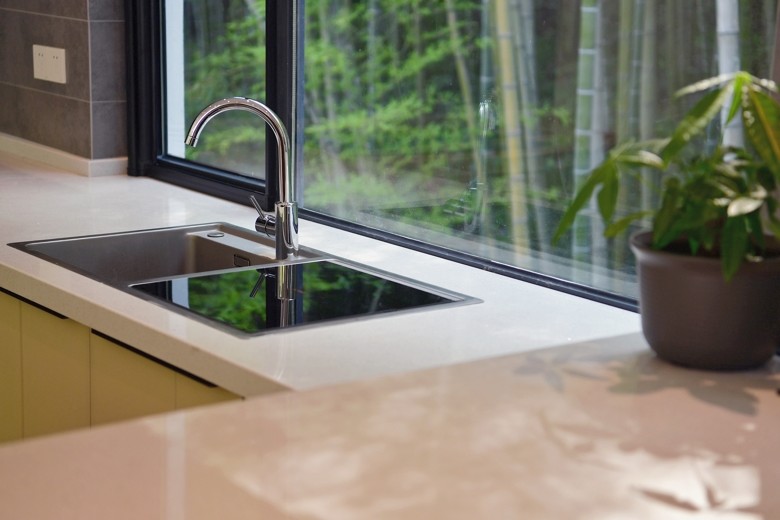
It’s best to store jars and containers in a dedicated spice cabinet. If there isn’t a specific cabinet available, it’s advisable to keep them in a uniform storage box to reduce cleaning burdens.
Principle Two: Retrieve Cooking Items Within 3 Seconds
This is the key point and also the challenge. Making items in the kitchen “invisible” doesn’t mean just stuffing all kitchen supplies into cabinets. Accessibility and speed require:
- Proximity Principle: Frequently used spices and cooking tools should be placed in the most convenient locations for corresponding tasks. After all, when cooking, you won’t have time to look around; having these items within the shortest distance and time is ideal, minimizing movement directly enhances your efficiency in the kitchen.
- Like with Like: Group similar items together based on their categories and uses. For example, keeping the kettle and coffee machine together allows you to easily grab coffee grounds and cups without moving around.
Based on these requirements, let’s organize the main items stored in the three primary areas of the kitchen:
- Cooking Area
If there is no built-in oven or steamer below the gas stove, this area can be used for storage. Since cookware tends to be heavy, the best position is under the stove where it’s easy to access pots, rice cookers, frying pans, pressure cookers, etc.

- Washing Area
The space under the sink is also excellent for storage. Following the principles of grouping like with like and proximity, you can store items related to cleaning such as vegetable wash basins, dish soap, cleaning sponges, and plastic gloves here. If you have a Fotile sink dishwasher installed, dishwashing powder can also be stored here for easy access when washing dishes. It’s worth mentioning that Fotile’s sink dishwasher is also a great tool for storage in the washing area while saving space. It effectively combines three functions in one space: sink, dishwasher, and fruit/vegetable purifier. This way, you don’t need to allocate additional cabinet space for a dishwasher or take up countertop space with a fruit/vegetable purifier.
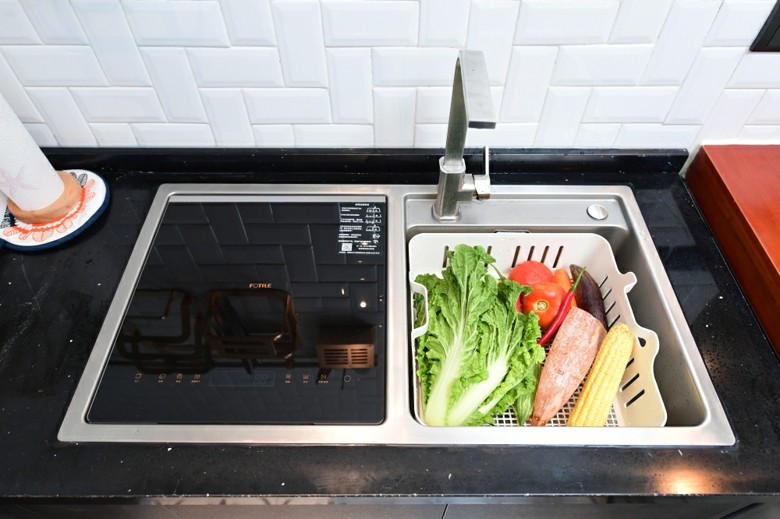
- Preparation Area
As mentioned earlier, if it’s impossible to keep countertops completely clear, at least arrange items neatly in storage boxes (spice boxes, utensil boxes, glass jars) to maintain cleanliness on countertops—especially in preparation areas.

The cabinet storage space in this area is ample enough to hold all utensils as well as products like instant noodles, dried goods, grains, and less frequently used sauces; additionally storing items like cling film, garbage bags, peelers, and whisks together makes meal prep easier. When dining, having rice scoops and utensils together means you can grab both at once while serving rice—completing it in three seconds—isn’t that convenient? Finding things becomes much easier too.
Principle Three: Prioritize Frequently Used Items
Good storage makes cleaning and tidying up quicker and more convenient rather than creating chaos that reduces efficiency. Therefore after grouping similar items close together for storage we also need to consider usage frequency. Arrange positions based on how often items are used; frequently used items should be closest while less frequently used ones can be placed further back.
Upper cabinets should store lighter items while lower cabinets hold heavier ones, which is a method of organizing cabinets by usage frequency from high to low. However if you have your own habits feel free to organize according to your preferences. Below we’ve listed a “Commonly Used Items List” for reference during organization.

Additionally consider light on top and heavy on bottom for safety and ease of access. Upper cabinets are suitable for storing less frequently used but lighter items such as paper towels, tea leaves, instant noodles or unused spices. Heavier cookware should be stored in lower cabinets along with fragile items like wine glasses or coffee cups.

Taking into account all these storage principles above it’s evident that items can be categorized into four main types: frequently used heavy, frequently used light, seldom used heavy, seldom used light. This way you’ll quickly know where seldom-used items are stored without rummaging through cabinets again when needed—making management easier.

In situations where kitchen space is limited these three principles help achieve better kitchen organization. Additionally here’s a small suggestion: organizing is meant to make kitchens look cleaner and tidier overall; besides orderly storage daily effective cleaning work is also necessary! Establish good habits by maintaining cleanliness as you cook so every dish prepared can look Instagram-worthy!


